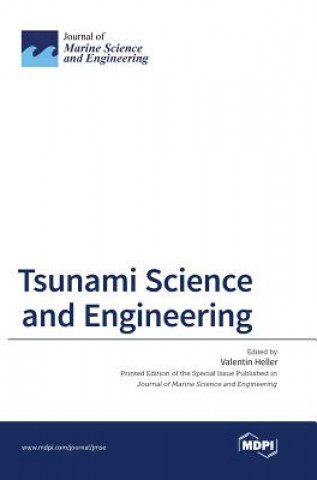
Kód: 13937793
Tsunami Science and Engineering
JMSE | Special Issue : Tsunami Science and Engineering Recent earthquake-tsunamis including the 2004 Indian Ocean Tsunami, with over 230,000 casualties, and the 2011 Tohoku Tsunami in Japan, with over 18,5 ... celý popis
- Jazyk:
 Angličtina
Angličtina - Vazba: Pevná
- Počet stran: 330
Nakladatelství: Mdpi AG, 2016
- Více informací o knize

Mohlo by se vám také líbit
Dárkový poukaz: Radost zaručena
- Darujte poukaz v libovolné hodnotě a my se postaráme o zbytek.
- Poukaz se vztahuje na celou naši nabídku.
- Elektronický poukaz vytisknete z e-mailu a můžete ihned darovat.
- Platnost poukazu je 12 měsíců od data vystavení.
Více informací o knize Tsunami Science and Engineering
Nákupem získáte 218 bodů
 Anotace knihy
Anotace knihy
JMSE | Special Issue : Tsunami Science and Engineering Recent earthquake-tsunamis including the 2004 Indian Ocean Tsunami, with over 230,000 casualties, and the 2011 Tohoku Tsunami in Japan, with over 18,500 people missing or dead, serve as tragic reminders that such waves pose a major natural hazard to human beings. Landslide-tsunamis, including the 1958 Lituya Bay case, may exceed 150 m in height and if similar waves are generated in lakes or reservoirs (so-called impulse waves), then they may overtop dams and cause significant devastation downstream, such as in the 1963 Vaiont case with around 2,000 casualties. The after-effects due to such catastrophes are not limited to the region immediately impacted by the wave; for example, the 1963 Vaiont case affected hydropower plant planning and management globally and the 2011 Tohoku Tsunami initiated changes to nuclear power plant policies worldwide. Active prevention of the wave generation is extremely unlikely and limited to rare cases where creeping slides could be stabilized. Scientists and engineers thus work mainly on passive methods to face this hazard. In many cases, the propagation time between generation and shoreline is sufficiently long, allowing early warning systems for evacuation to be an effective passive method. For impulse waves in smaller water bodies, however, the propagation time is too short for an adequate evacuation so further passive methods are critical. Such methods include sea walls, reinforced infrastructure and the provision of adequate freeboards of dam reservoirs. These methods require detailed knowledge of (i) the wave features as a function of the generation mechanism, (ii) the shoreline run-up and (iii) the interaction with structures. Despite a significant increase in research activities after the 2004 Indian Ocean Tsunami, there certainly can be - and needs to be - more research with the aim to reduce the destruction caused by tsunamis to us and our environment.
 Parametry knihy
Parametry knihy
Zařazení knihy Knihy v angličtině Technology, engineering, agriculture Technology: general issues
2177 Kč
- Plný název: Tsunami Science and Engineering
- Jazyk:
 Angličtina
Angličtina - Vazba: Pevná
- Počet stran: 330
- EAN: 9783038422334
- ISBN: 3038422339
- ID: 13937793
- Nakladatelství: Mdpi AG
- Hmotnost: 912 g
- Rozměry: 244 × 170 × 27 mm
- Datum vydání: 01. July 2016
Oblíbené z jiného soudku
-

Flavor Thesaurus
603 Kč -

Lego Boost Activity Book
580 Kč -
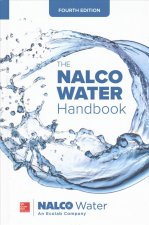
NALCO Water Handbook, Fourth Edition
5777 Kč -

Schaum's Outline of Statistics, Sixth Edition
937 Kč -

Social Engineering
836 Kč -

New Dark Age
312 Kč -
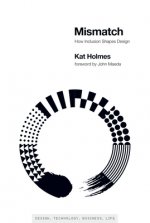
Mismatch
394 Kč -

Rainwater Harvesting for Drylands and Beyond, Volume 2
1015 Kč -
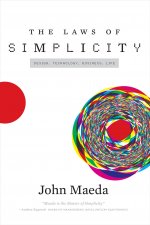
Laws of Simplicity
383 Kč -

Compact Cassettes Collectible Book - Compact Cassetten Sammelbuch
327 Kč -

Brave New Work
410 Kč -

Quantum Computing for Everyone
422 Kč -

Principles and Practice of Breeding Race Horses - Containing Information on Crossing, Stallions, Selection and Many Other Aspects of Horse Breeding
511 Kč -

Creating the Twentieth Century
1850 Kč -

20 Easy Raspberry Pi Projects
735 Kč -

Scrum for Hardware Design
580 Kč -

Rope and Harness Work on the Farm - With Information on Rope Construction and Various Knots Used on the Farm
511 Kč -

Conveyor Engineering
2012 Kč -

Recommendation Engines
349 Kč -

Beginner's Guide To Circuits
437 Kč -

Programming With Openscad
692 Kč -

Fantastic Inventions of Nikola Tesla
350 Kč -

Firearm Anatomy - Book II the Sten Submachine Gun
963 Kč -

Reverse Engineering
3066 Kč -

New History of Modern Computing
1175 Kč -

OCR Design and Technology for AS/A Level
1755 Kč -

Philosophy and Technology
704 Kč -

Handbook of Modern Pig Farming
871 Kč -

Innovation Deulsion
566 Kč -

Bakewise
1018 Kč -

Future Histories
646 Kč -

48 Laws of Power in Practice
538 Kč -

Made to Break
927 Kč -
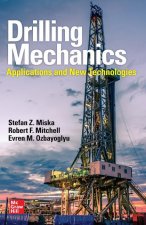
Drilling Engineering: Advanced Applications and Technology
6207 Kč -

Extraction of Artemisinin from Artemisia Annua
1704 Kč -
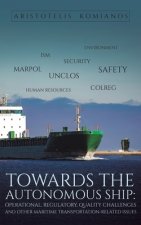
Towards the Autonomous Ship: Operational, Regulatory, Quality Challenges
475 Kč -

ISE Machining and CNC Technology
2272 Kč -

America's New Slavery? FMRI Technology! Functional Magnetic Resonance Imaging! Or America's Salvation? All Americans Should Be Concerned!
568 Kč -

How Things Work 2nd Edition
515 Kč -

Pilot-Assisted OFDM Systems
2405 Kč -

Reactive Separation Processes
10348 Kč -

Civil and Military Airworthiness
1759 Kč -

Drying Kinetics of Green Bitter Gourd (Momordica charantia L.) Slices in a Fluidized Bed Dryer
1693 Kč -

New Trends in Recycled Aggregate Concrete
1759 Kč -
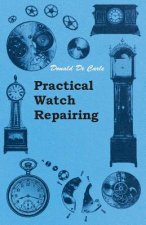
Practical Watch Repairing
1314 Kč -

Ford Manual
1177 Kč -

Gold Electroplating
2405 Kč -

Dynamos And Electric Motors - How To Make And Run Them
1064 Kč -

Flow Resistance: A Design Guide for Engineers
12453 Kč
Osobní odběr Praha, Brno a 12903 dalších
Copyright ©2008-24 nejlevnejsi-knihy.cz Všechna práva vyhrazenaSoukromíCookies





 Vrácení do měsíce
Vrácení do měsíce 571 999 099 (8-15.30h)
571 999 099 (8-15.30h)